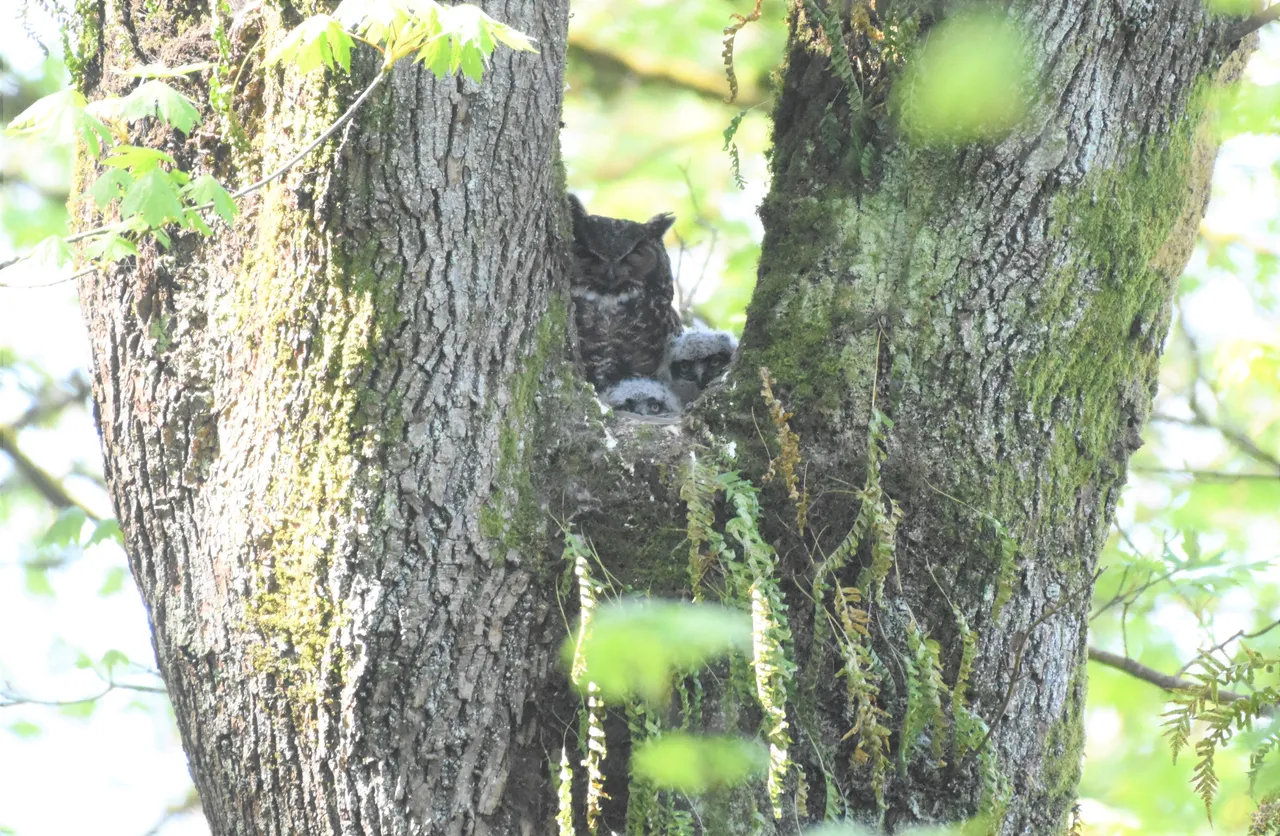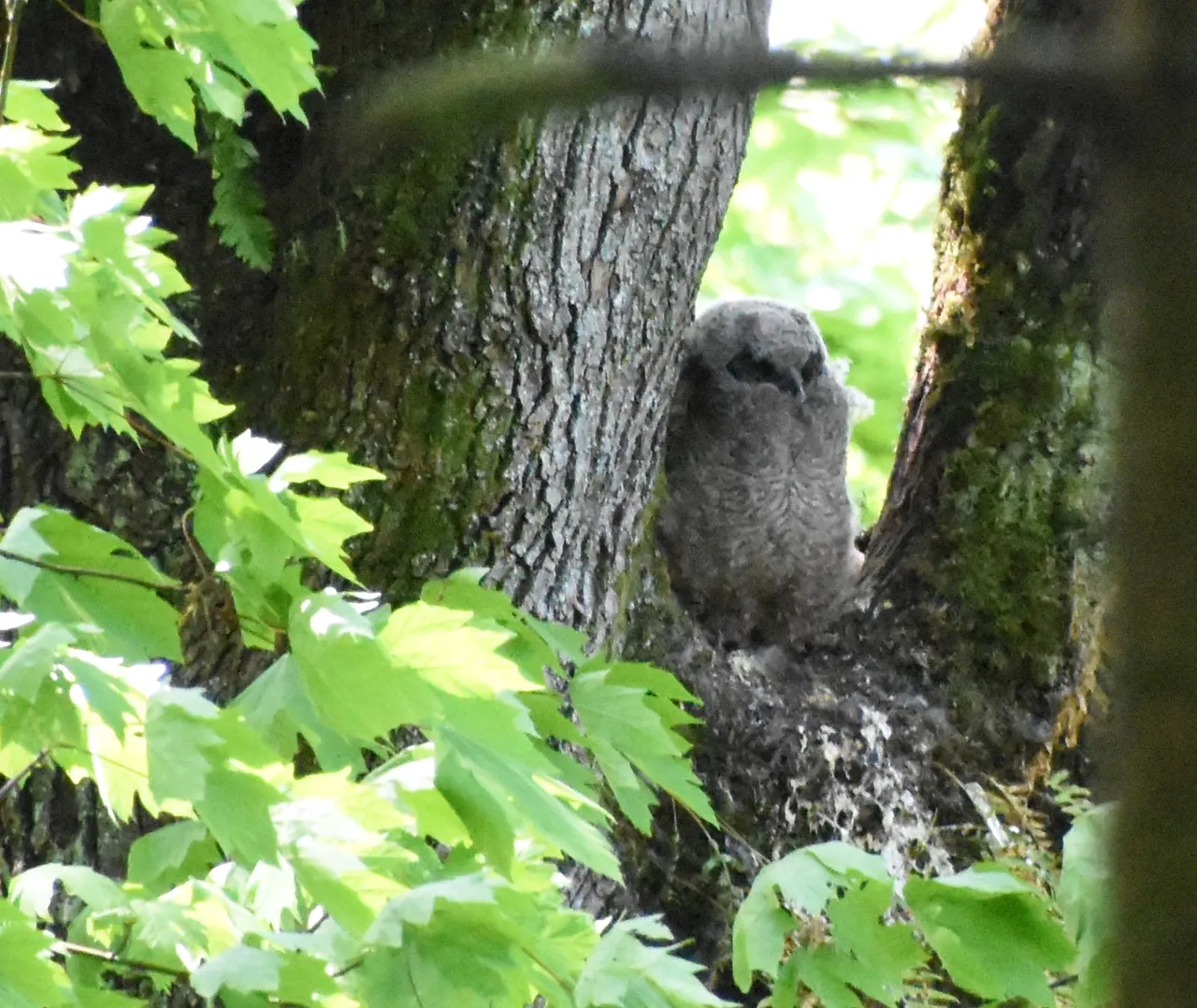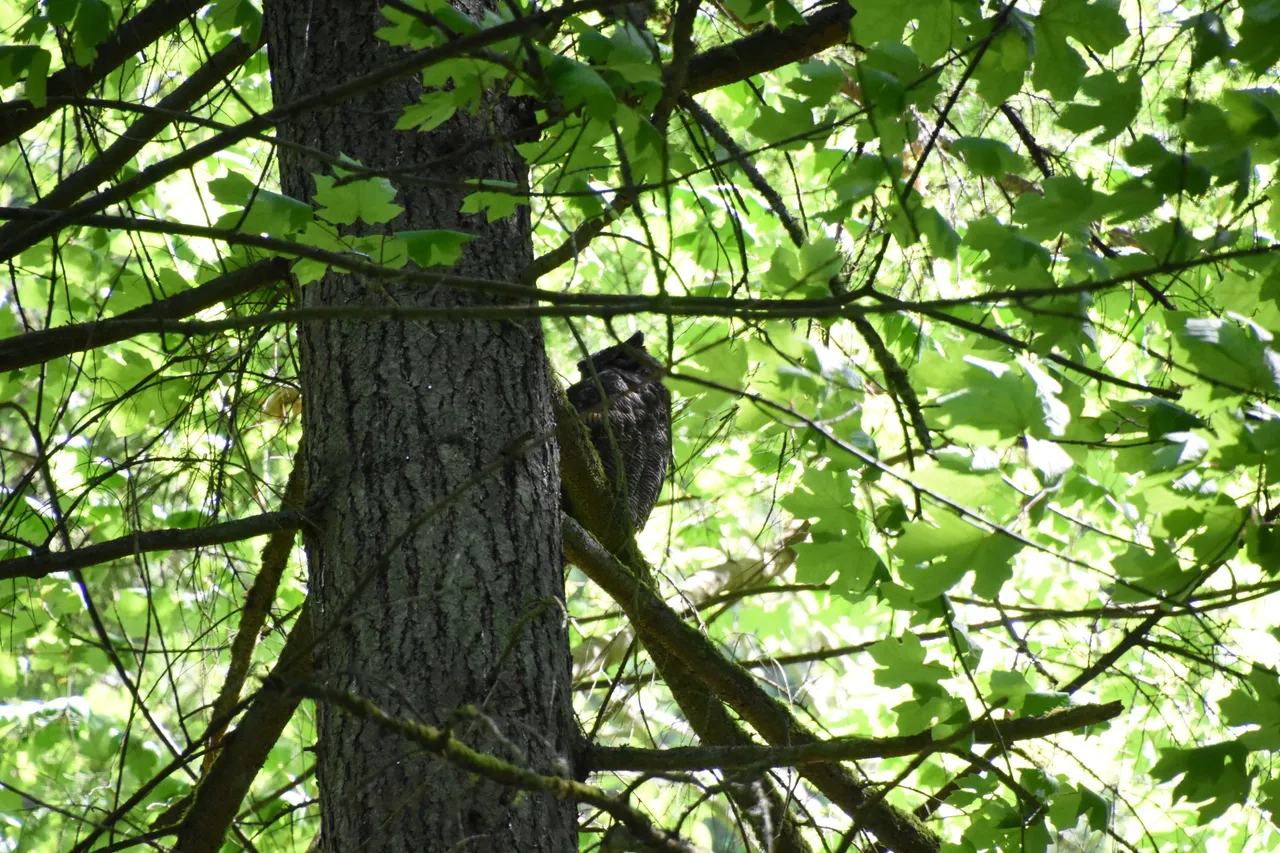
The photo from April 20, 2020, 17 days prior to the following photos.
I posted a couple of weeks ago about a family of Great-horned Owls Bubo virginianus in a nest on the Chamber's Creek Trail in Pierce County. The owlets were pretty small in the first post. The parent was on the nest, likely for protection and warmth.

An owlet Great-horned Owl on the same nest 17 days later. I am not sure if one of the owls has not survived or if it is just out of sight. Note the size difference.
At this visit the adults were both away from the nest, but looking on nearby. To me the owlet looks 3-4 times as big as the last time I saw him.

Here is a photo of one of the parents, looking over the nest from an nearby roost.
Great horned owls are the largest North American owl by mass, and are ferocious predators. They can kill large animals like hares, but the average size of their prey is smaller than for Red-tailed Hawks, the diurnal common North American hawk that fills their niche in daylight hours. 90% of their prey is rodents, and 10% birds. They can take birds as large as herons and rodents as large as jackrabbits and hares.
Be sure to follow The Bird Banter Podcast to hear birders talking birding.
Until next time, good birding and good day.